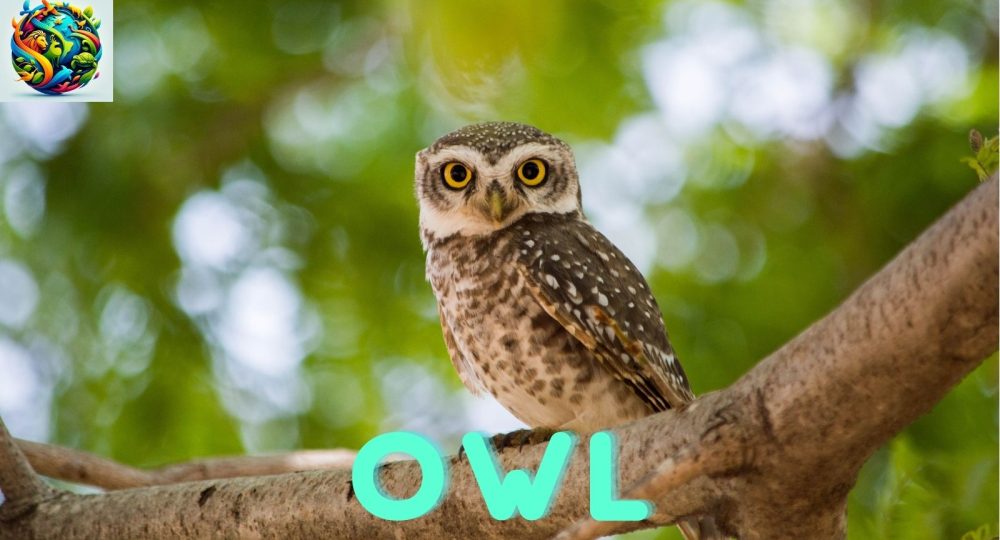Owls: Majestic Nocturnal Predators of the Night Sky
Introduction
Owls are famous birds of prey that have fascinated people for hundreds of years with their silent flying and sharp eyes. These mystery animals are known for their amazing hunting skills, unique physical traits, and strange nighttime habits.
Interesting Fact
The fact that they can turn their heads up to 270 degrees is one of the most amazing things about them. Because they are so flexible, they can look around without moving, which helps them find their food very precisely.
Habitat/Food
In their natural environments, you can find them in woods, grasslands, deserts, and the tundra. They are very flexible birds that do well in a wide range of settings. Owls are carnivorous hunters that eat mostly carcasses.
Appearance
Their big, forward-facing eyes, sharp claws, and unique face disks make them easy to spot. Their feathers are soft and designed to help them fly quietly, which lets them sneak up on their prey. Owls come in many shapes and sizes, from the very small elf owl to the huge great-horned owl.
Types and subspecies
The Strigidae and Tytonidae families are home to more than 200 different kinds of owl. There are different types of these species, and each one has adapted to a different environment and area of the world.
Where they’re found
They live on every continent except Antarctica. They live in many different types of ecosystems, from dense tropical jungles to arctic tundras. Many species, like the barn owl, can live in a wide range of settings, even cities.
Predator & Threat:
Even though they are very good hunters, bigger birds of prey like EAGLE and hawks can be dangerous because they may fight with them for food and territory. Owl numbers are also in danger from things people do, like destroying their habitats, using pesticides, and hitting them with cars.
Mating:
Owls usually only mate once and stay together for a long time. Different species have different mating customs, but most of them involve complex courtship displays, sounds, and gifts. Owlet females lay their eggs in nests made of feathers and other soft materials. Both parents take turns caring for the eggs and their young.
How Owls Talk to Each Other:
These birds talk to each other by making noises like hoots, screeches, and hisses. These calls do many things, like marking territory, luring mates, and alerting others to possible danger.
How to Say Words in Several Languages:
The way words are said varies from language to language.
- It sounds like “oul” in English.
- It is called “chouette” in French.
- It is “Eule” in German.
FAQs:
- Q: Do they do anything during the day?
- A: Most of them are nocturnal, which means they are most busy at night. However, some species, like the snowy owl, are diurnal, which means they hunt during the day.
- Q: Can they fully turn their heads?
- A: Their necks can move in a lot of different ways, but they can not turn their heads all the way around. However, they can turn their heads all the way around to face either way.
- How do they find food at night?
- These animals have very well developed abilities, like great night vision and sharp hearing, which helps them hunt well in low light. Their special feathers let them fly quietly, so they can sneak up on their food without being seen.
- Question: Do they move?
- Yes, some species of birds migrate long distances to breed or find food. Other species are resident birds that stay in their areas all year. Migration patterns change based on things like weather, food supply, and the suitability of the habitat.
- A: Are they in danger?
- Not all species are in danger because of ecosystem loss, pollution, and people messing with them, but many are. Some species, like the barn and snowy owls, are not as threatened as others, like the spotted and the burrowing, whose numbers are declining and make them threatened or endangered.
- How do they get pellets back up?
- They can not digest the fur, bones, and other parts of their prey that they can not process, so they throw up pellets made of these parts. Researchers can learn a lot about the owls’ food and eating habits from these pellets, which are made up of compacted fur and bones.
- How well can they see in the dark?
- A: They have great night vision, but they can not see in complete darkness. Their eyes, on the other hand, are adapted to low light, which lets them find prey even in poorly lit places. They can also hear very well, which helps them find food through sound.
- How long do they stay alive?
- Their life spans are different based on the species and the environment they live in. Some small species may only live a few years in the wild, but bigger species, like the great-horned owl, can live up to 20 years or more if conditions are good.
- Is an owl a sign of wisdom?
- A: Because they are quiet and mysterious and have sharp senses, they are linked to wisdom and knowledge in many cultures. But different cultures see them in different ways. For example, some see them as signs of death or bad luck.
- Do they know how to swim?
- They are not built to swim and usually stay away from water, but they can swim short lengths if they have to. However, owls should not swim because it can make them drown and make it harder for them to fly, so they try to avoid it whenever they can.
Author is a passionate writer with an engineering background, driven by a deep love for animals. Despite a successful entrepreneurial career, Saad's true passion lies in sharing his knowledge and insights about animals with the world.
Panda Bear: Gentle Giants of China’s Bamboo Forests
June 13, 2024
1 comment
Leave a reply Cancel reply
More News
Myna: The Versatile and Vocal Songbird
May 20, 2024Chameleon: Masters of Camouflage and Adaptation
May 15, 2024Elk: Amazing Emblem of the Forest and Plains
May 31, 2024








Hello there, just became alert to your blog through Google, and found that it’s really informative.
I’m going to watch out for brussels. I’ll be grateful if you continue this
in future. A lot of people will be benefited from your writing.
Cheers! Escape room